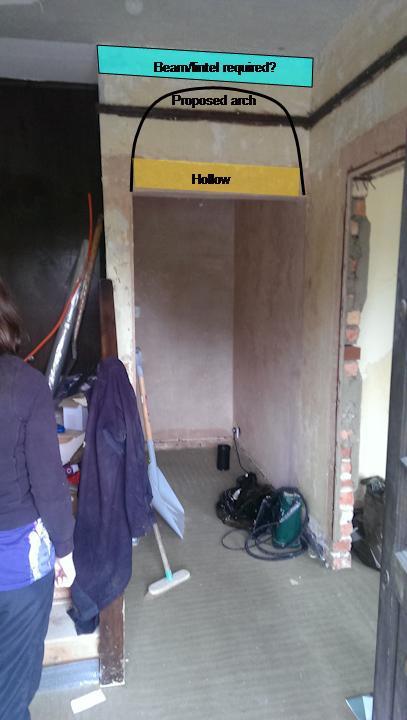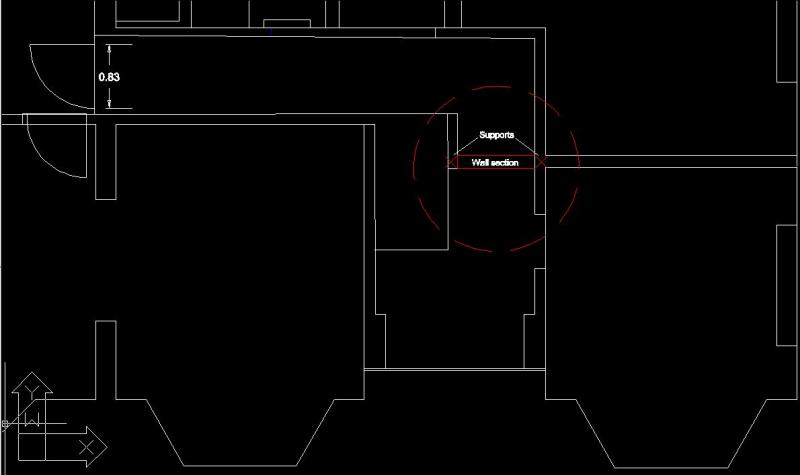Hello
Looking for some advice on taking away or opening up a section of wall over hanging our hallway.
Here is the existing construction and what we would like to do.
and the layout of where the section of wall is
The whole thing is red brick but the bottom 150mm appears to be plasterboarded over so im guessing there is a lintel or beam in there already from a past doorway.
This section of wall is carrying 3 or 4 floor/roof joists above from an existing attic conversion (property is a bungalow, pitched roof with concrete tiles, only hallway/bedrooms above).
Any idea what size beam or lintel would be required? Span wall to wall is 1.1m so im wondering if a 100x65x1300 lintel would be enough or would i need be looking at steel?
Also is there a way to put joist hangers on a lintel so i could have the lintel in the celing void allowing a flat celing? Would i be best with a I beam for this purpose or would a timber beam be a possibility?
Cheers Neil
Looking for some advice on taking away or opening up a section of wall over hanging our hallway.
Here is the existing construction and what we would like to do.
and the layout of where the section of wall is
The whole thing is red brick but the bottom 150mm appears to be plasterboarded over so im guessing there is a lintel or beam in there already from a past doorway.
This section of wall is carrying 3 or 4 floor/roof joists above from an existing attic conversion (property is a bungalow, pitched roof with concrete tiles, only hallway/bedrooms above).
Any idea what size beam or lintel would be required? Span wall to wall is 1.1m so im wondering if a 100x65x1300 lintel would be enough or would i need be looking at steel?
Also is there a way to put joist hangers on a lintel so i could have the lintel in the celing void allowing a flat celing? Would i be best with a I beam for this purpose or would a timber beam be a possibility?
Cheers Neil



